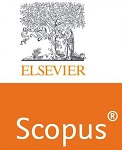Determinants of International Tourism Demand in India: an Augmented Gravity Model Approach
Abstract
This study examines the determinants of international tourism demand in India using time series data from 1991-2019 from the top 15 source tourist countries. To do this, the study employed an augmented gravity model estimated using a two-step panel fixed-effect model to identify the factors affecting tourism demand in India. These factors include the income of both India and its origin countries. The domestic exchange rate of both India and the source country is included to capture the impact of the cost of living and prices of goods and services. Supporting variables like distance, common border, and common language between India and source of origin country were also identified. Further, it includes the impact of similarity and common membership to SAARC. Empirical results indicate that the level of Indian income, language, and similarity have a positive impact on tourism inflow to India. On the other hand distance and the domestic exchange rate of India have negative impacts. Further, the income level of origin countries has a significant positive impact. Also, common membership to SAARC and the common border between India and the origin country have a significant positive impact on tourism demand in India. Furthermore, international demand for Indian tourism is not affected by the relative price in the origin country.



























